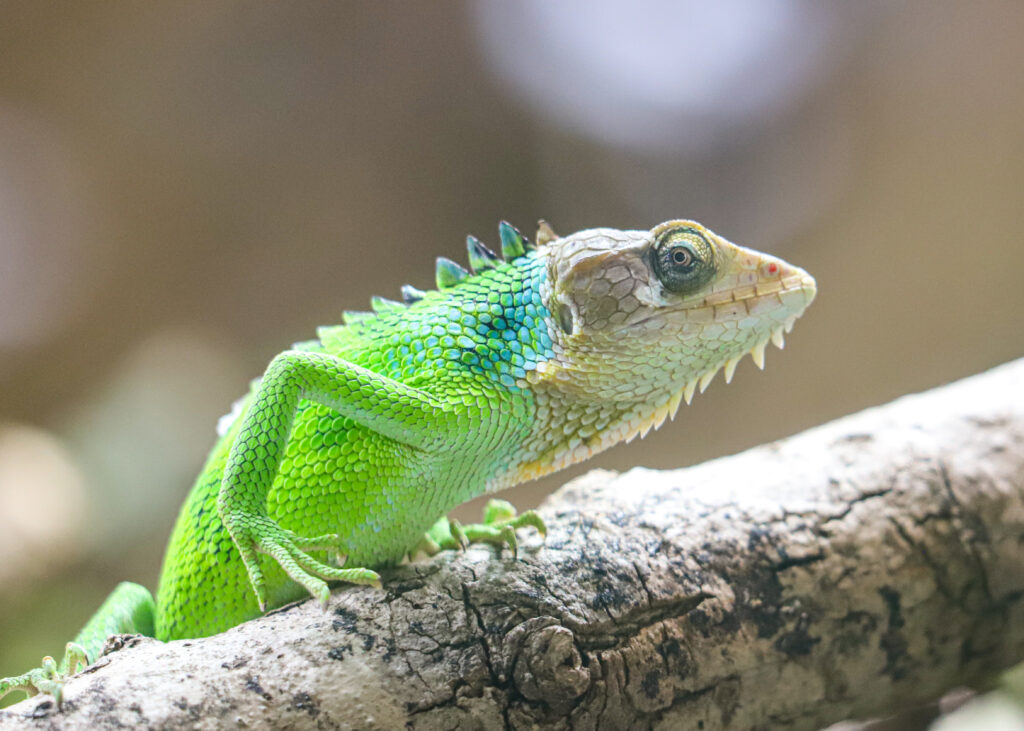
We have two Peruvian bush lizards here at Paignton Zoo. One male and one female, who both live in Tropical Trails in separate exhibits. Our male, who you can find in the very first enclosure as you walk in, is often easy to spot showing off his green-blue colours. Our female, who might take a little more patience to spot, you can find towards the end of the trail.
The Peruvian bush lizard is native to Peru, with a small number found in Equador. They typically forage on trees and shrubs at heights ranging from 1.5 to 7 meters above the ground. They are a medium-sized lizard characterized by its slender body, pronounced dorsal crest, chameleon-like eyes, and exceptionally long, semi-prehensile tail.
Interesting facts!
- Although they aren’t true chameleons, Peruvian Bush Lizards have chameleon-like eyes and can change their colour from bright green to brown depending on their mood or surroundings, helping them blend into their environment.
- They are arboreal creatures, spending most of their lives in trees and shrubs. Their long, semi-prehensile tails help them balance and move gracefully through the branches.
- At night, they roost on twigs and leaves several meters above the ground, often choosing spots that mimic their twig-like appearance to avoid predators.
- Unlike many lizards, they are omnivorous, feeding on leaves, flowers, fruits, and the occasional insect or spider. They use a passive hunting strategy, waiting for prey rather than actively chasing it.
Conservation
The Peruvian Bush Lizard, also known as the Peruvian Bush Anole, is currently listed as Vulnerable on the IUCN Red List. This species is native to limited regions in Peru and Ecuador, and its population is under threat due to habitat loss from logging, agriculture, and infrastructure development. One major concern is the construction of a hydroelectric dam that is expected to flood a significant portion of its natural habitat. With its range restricted to just a few known locations, conservation efforts are crucial to prevent further decline and protect this unique reptile.


